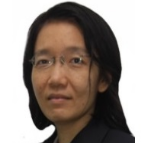Symmetry in Power Systems and Thermal Engineering
A special issue of Symmetry (ISSN 2073-8994). This special issue belongs to the section "Engineering and Materials".
Deadline for manuscript submissions: 31 July 2024 | Viewed by 2804

Special Issue Editors
Interests: thermal engineering; thermal physics; fluid mechanics; modeling and simulation
Special Issue Information
Dear Colleagues,
This Special Issue is on original research in symmetry and asymmetry phenomena in thermal science and engineering, with emphasis on power systems and heat transfer engineering. Theoretical, experimental, and numerical studies are welcomed on all aspects of, but not limited to, the following: thermal power systems, submarine marine aeronautical and astronautical power systems, thermal management of large and small systems, conventional and alternative energies, fission and fusion technologies, high-power energy systems, augmentation of heat transfer, basic conduction, convection, radiation and multi-phase flow, sustainability, thermal environment, reduction in carbon footprint, advanced materials, and state-of-the-art technologies that improve thermal systems. We look forward to receiving your contributions to this Special Issue.
Prof. Dr. Chih Ping Tso
Dr. Gooi Mee Chen
Guest Editors
Manuscript Submission Information
Manuscripts should be submitted online at www.mdpi.com by registering and logging in to this website. Once you are registered, click here to go to the submission form. Manuscripts can be submitted until the deadline. All submissions that pass pre-check are peer-reviewed. Accepted papers will be published continuously in the journal (as soon as accepted) and will be listed together on the special issue website. Research articles, review articles as well as short communications are invited. For planned papers, a title and short abstract (about 100 words) can be sent to the Editorial Office for announcement on this website.
Submitted manuscripts should not have been published previously, nor be under consideration for publication elsewhere (except conference proceedings papers). All manuscripts are thoroughly refereed through a single-blind peer-review process. A guide for authors and other relevant information for submission of manuscripts is available on the Instructions for Authors page. Symmetry is an international peer-reviewed open access monthly journal published by MDPI.
Please visit the Instructions for Authors page before submitting a manuscript. The Article Processing Charge (APC) for publication in this open access journal is 2400 CHF (Swiss Francs). Submitted papers should be well formatted and use good English. Authors may use MDPI's English editing service prior to publication or during author revisions.
Keywords
- thermal power systems
- energies
- thermal science
- thermal engineering
- thermal management






